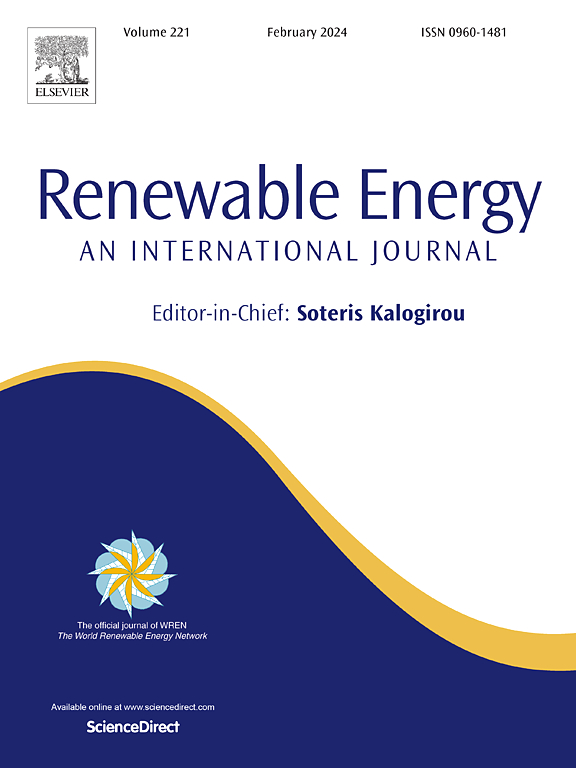Short-term forecast of solar irradiance components using an alternative mathematical approach for the identification of cloud features
IF 9
1区 工程技术
Q1 ENERGY & FUELS
引用次数: 0
Abstract
Solar energy technologies require precise solar forecasting to reduce power generation losses and protect equipment from irradiance fluctuations. This study introduces an alternative methodology for short-term forecasting of direct normal irradiance (DNI) and global horizontal irradiance (GHI) utilizing ground-based sky images captured by a single device. A low-cost all-sky imager (ASI) was developed, which implements an angular transformation and an optical flow technique to extract cloud features such as shape and velocity. A mathematical model calculates cloud transmittance based on pixel intensity, eliminating complex training steps. Results from a 30-day experimental campaign, incorporating diverse meteorological conditions, were compared against a secondary standard solarimetric station, a smart persistence model, and state-of-the-art approaches. The DNI forecast achieved an RMSE (relative error) of 46.79 W/m (11.99%) for 1-min intervals and 90.21 W/m (17.54%) for 10-min intervals, while GHI ranged from 31.73 W/m (4.68%) to 75.02 W/m (13.63%). Pearson correlation coefficients exceeded 0.9 overall, reaching 0.98 and 0.99 for the 1-min DNI and GHI forecasts, and 0.91 and 0.96 for the 10-min DNI and GHI forecasts, respectively, underscoring the system’s accuracy and robustness in complex meteorological scenarios.
使用另一种数学方法识别云层特征,对太阳辐照度成分进行短期预报
太阳能技术需要精确的太阳预报,以减少发电损失并保护设备免受辐照度波动的影响。本研究介绍了一种替代方法,利用单个设备捕获的地面天空图像对直接正常辐照度(DNI)和全球水平辐照度(GHI)进行短期预测。我们开发了一种低成本的全天空成像仪(ASI),它采用角度变换和光流技术来提取云的形状和速度等特征。数学模型根据像素强度计算云的透射率,省去了复杂的训练步骤。在 30 天的实验活动中,结合不同的气象条件,将实验结果与二级标准测日站、智能持久性模型和最先进的方法进行了比较。DNI 预测 1 分钟间隔的 RMSE(相对误差)为 46.79 W/m2(11.99%),10 分钟间隔的 RMSE(相对误差)为 90.21 W/m2(17.54%),而 GHI 范围从 31.73 W/m2(4.68%)到 75.02 W/m2(13.63%)不等。皮尔逊相关系数总体超过 0.9,1 分钟 DNI 和 GHI 预报分别达到 0.98 和 0.99,10 分钟 DNI 和 GHI 预报分别达到 0.91 和 0.96,突出表明了该系统在复杂气象情况下的准确性和稳健性。
本文章由计算机程序翻译,如有差异,请以英文原文为准。
求助全文
约1分钟内获得全文
求助全文
来源期刊

Renewable Energy
工程技术-能源与燃料
CiteScore
18.40
自引率
9.20%
发文量
1955
审稿时长
6.6 months
期刊介绍:
Renewable Energy journal is dedicated to advancing knowledge and disseminating insights on various topics and technologies within renewable energy systems and components. Our mission is to support researchers, engineers, economists, manufacturers, NGOs, associations, and societies in staying updated on new developments in their respective fields and applying alternative energy solutions to current practices.
As an international, multidisciplinary journal in renewable energy engineering and research, we strive to be a premier peer-reviewed platform and a trusted source of original research and reviews in the field of renewable energy. Join us in our endeavor to drive innovation and progress in sustainable energy solutions.
 求助内容:
求助内容: 应助结果提醒方式:
应助结果提醒方式:


